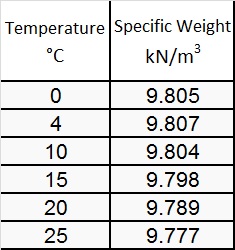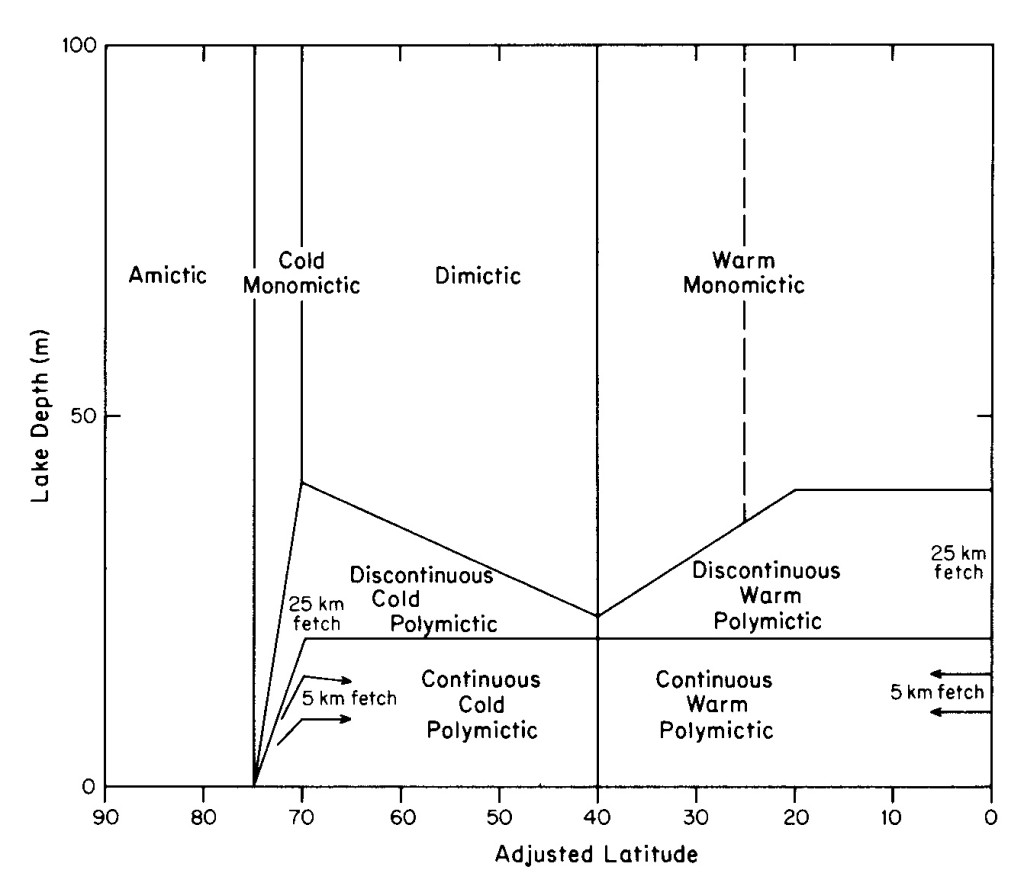
Specific weight of water. One of water’s unique properties is that it is heaviest at 4° C (39.2° F) and becomes lighter as it warms. It is also lighter as it cools further from 4 to 0° C.
Lake Classification by Mixing (1):
- Monomictic Lakes – one turnover per year
- Cold Monomictic Lakes – ice covered most of the year – turnover when lake warms slightly during short ice free period in the summer (Arctic and high altitude lakes)
- Warm Monomictic Lakes – no ice cover – warm and stratified for most of the year, turnover in winter when surface cools (lower temperate region lakes)
- Dimictic Lakes – turnovers in spring and fall, ice covered in winter (temperate regions)
- Polymictic Lakes – shallower lakes – multiple turnovers/mixing caused by wind
- Continuous Cold Polymictic Lakes – ice covered in winter / almost daily mixing when ice free
- Discontinuous Cold Polymictic Lakes – ice covered in winter / periods of stratification of days or weeks (generally deeper water than continuous cold polymictic lakes)
- Continuous Warm Polymictic Lakes – no ice cover / almost daily mixing
- Discontinuous Warm Polymictic Lakes – no ice cover/ periods of stratification of days or weeks (generally deeper water then continuous warm polymictic lakes)
- Amictic Lakes – always ice covered (Antarctica and Arctic regions, very high altitude lakes)
In general, holomictic lakes are all lake types that mix. Meromictic lakes have stable layering at depths and can contain stagnant or dead zones or high saline or dissolved mineral zones. Mixing occurs at the surface and upper layers only in a variety of class types. For example, a meromictic lake having a stable deep region can be classed as warm monomictic for its surface and upper layers. Fetch size (longest length of the waterbody surface) will also play a role in mixing rates (see Figure 2) with longer fetches allowing for larger waves and more mixing.
As the surface temperature of a lake approaches 4° C (39.2° F), either by warming from colder temperatures (spring) or cooling from warmer temperatures (fall), the surface water will sink to the bottom and in doing so it will mix the waters of the lake.

Figure 2. Estimated distribution of the eight lake mixing classification types in relation to latitude (adjusted for elevation) and water depth. From W.L. Lewis, Jr. Can. J. Fish. Aquat. Sci. 40 (1993) 1779-1787. © Canadian Science Publishing.
From Figure 2 we can ascertain the type of lakes in a particular region. For southern Ontario (~43°N) most lakes will be dimictic, with shallower lakes and ponds being mostly discontinuous and continuous cold polymictic in nature.
Reference:
1) W.M. Lewis, Jr. Can. J. Fish. Aquat. Sci. 40 (1983) 1779-1787.



Pingback: Dissolved Oxygen Content in Water vs. Temperature » The Scientific Fisherman
Pingback: Lake Turnover and Stratification » The Scientific Fisherman